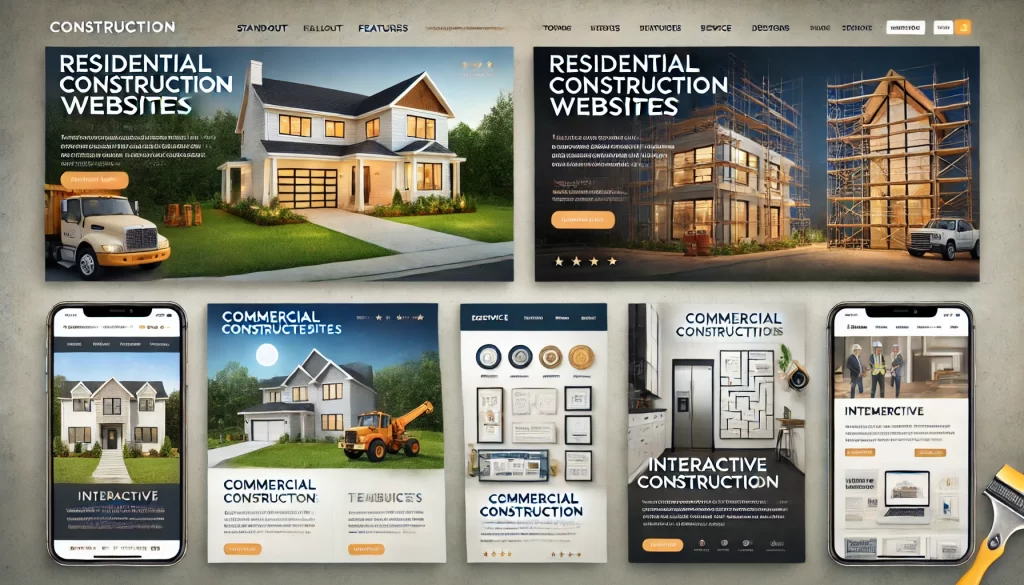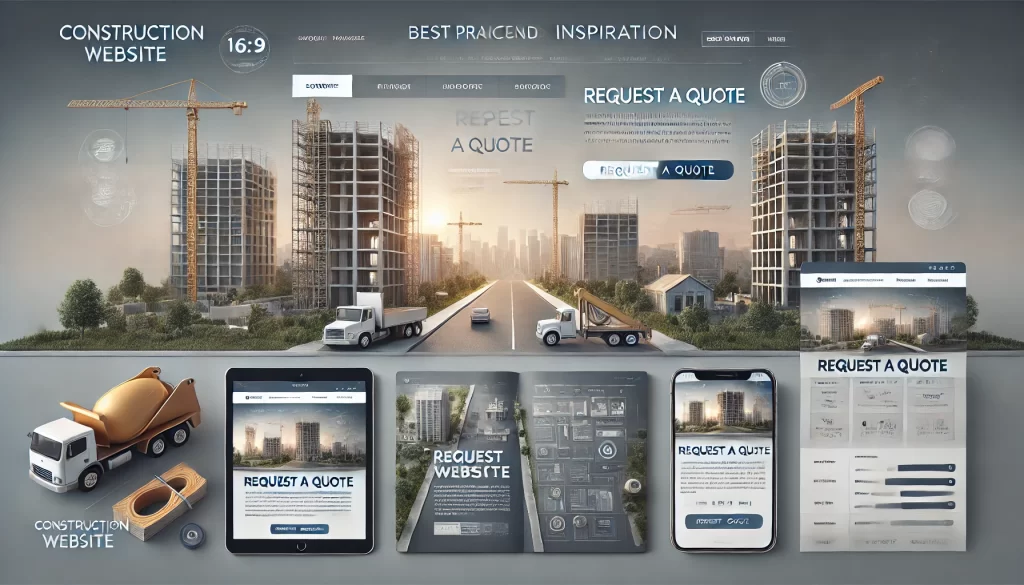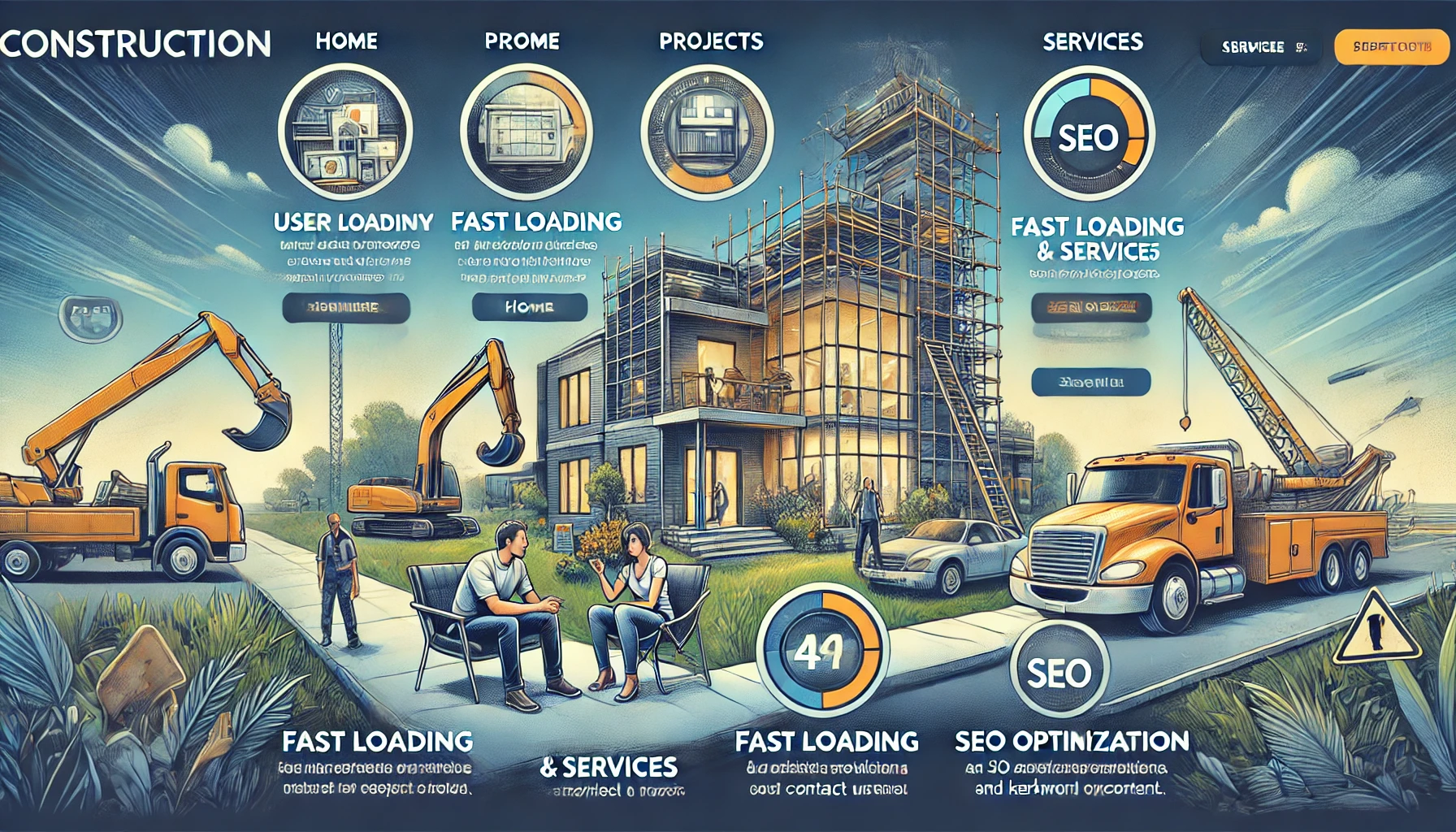Introduction
A well-designed construction website serves as the cornerstone of a successful digital presence. Whether showcasing projects or attracting clients, the design of your site significantly impacts user engagement. This article outlines best practices for creating a construction website that excels in functionality, aesthetics, and user experience.

Essential Elements for Effective Construction Website Design
A successful construction website design integrates key elements that enhance usability and appeal.
Related Posts
- Design Best Practices for Construction Websites
- Case Studies and Examples of Construction Websites
- Specialized Construction Website Content
User-Friendly Navigation
Visitors should find information easily. A simple menu with clearly labeled sections like “Services,” “Projects,” and “Contact Us” ensures a seamless experience.
High-Quality Visuals
Images of completed projects and on-site work add credibility. Use professional photography to showcase your craftsmanship and highlight your company’s expertise.
Fast Loading Times
Slow websites frustrate users and impact rankings. Optimize images and use efficient coding practices to keep loading times under three seconds.
Responsive Design
Your website must adapt to different devices. A responsive layout ensures an optimal experience on desktops, tablets, and smartphones.
Call-to-Actions (CTAs)
Include prominent CTAs such as “Request a Quote” or “Contact Us.” These elements guide visitors to take action, driving engagement and leads.
SEO Optimization
Incorporate keywords like “modern construction website design” naturally into your content. Optimize meta descriptions, titles, and alt tags for better search visibility.

Inspiration Examples of Modern, Effective Construction Websites
Looking at successful examples can provide valuable insights.
Residential Construction Company Websites
These sites often focus on showcasing completed homes. They use clean layouts, bright visuals, and testimonials to build trust.
Commercial Construction Websites
These sites highlight large-scale projects, featuring bold imagery and concise project descriptions. Emphasis on industry certifications adds credibility.
Related Posts
- FAQs and Common Questions – Construction Websites
- Introduction to Construction Websites
- Building and Customizing Construction Websites
Interactive Construction Websites
Interactive features like cost calculators and live chat support enhance user engagement. They combine functionality with modern aesthetics.
Standout Features from Top Designs
- Minimalistic layouts with clear fonts.
- Video backgrounds highlighting active projects.
- Comprehensive service pages detailing expertise.
UX/UI Focus: Creating a Seamless User Experience
User experience (UX) and user interface (UI) are critical for retaining visitors and encouraging action.
Intuitive Layouts
Use logical design structures. Place important information like contact details and CTAs where users expect to find them.
Consistent Branding
Use consistent colors, fonts, and logos. Branding reinforces your identity and helps build trust.
Accessible Design
Ensure your website complies with accessibility standards, such as providing alt text for images and using readable font sizes.
Content Readability
Write content that is clear and concise. Use bullet points, short paragraphs, and headings to enhance readability.
Interactive Elements
Adding features like hover effects, clickable project galleries, and scroll-triggered animations improves engagement.
Tips for Crafting the Best Construction Website Designs
Prioritize Mobile-First Design
With most users browsing on mobile devices, ensure your site is optimized for smaller screens.
Focus on Security
Use HTTPS to protect data and build visitor trust. Security is especially important for contact forms and customer portals.
Regular Updates
Keep your website fresh with new project galleries, blog posts, and updates to services. Regular content updates improve SEO and keep users engaged.
FAQs
What makes a great construction website design?
A great design includes user-friendly navigation, high-quality visuals, fast loading times, and mobile responsiveness.
Why is mobile-first design important for construction websites?
Most users access websites on mobile devices. A mobile-first approach ensures optimal performance across all screen sizes.
What features should a construction website include?
Include a portfolio, service pages, contact information, testimonials, and interactive features like cost calculators or live chat support.
How does SEO impact construction web design?
SEO helps your website rank higher in search results. Using keywords like “construction web design” improves visibility and attracts organic traffic.
Why are high-quality visuals essential for construction websites?
They showcase your craftsmanship and build trust with potential clients. Professional images convey professionalism and attention to detail.
How often should I update my construction website?
Update it regularly with new projects, blog posts, or service changes. Fresh content improves user engagement and search engine rankings.
Key Takeaways
Designing a construction website involves balancing functionality, aesthetics, and user experience. By incorporating essential elements like high-quality visuals, responsive layouts, and interactive features, you can create a website that stands out in a competitive industry. Regular updates and SEO optimization further enhance its effectiveness, ensuring your business remains visible and appealing to potential clients.
- A well-designed construction website attracts clients and showcases expertise.
- Essential elements include user-friendly navigation, responsive layouts, and fast loading times.
- UX/UI focus ensures a seamless user experience, building trust and engagement.
- Regular updates and SEO efforts improve visibility and drive traffic.
